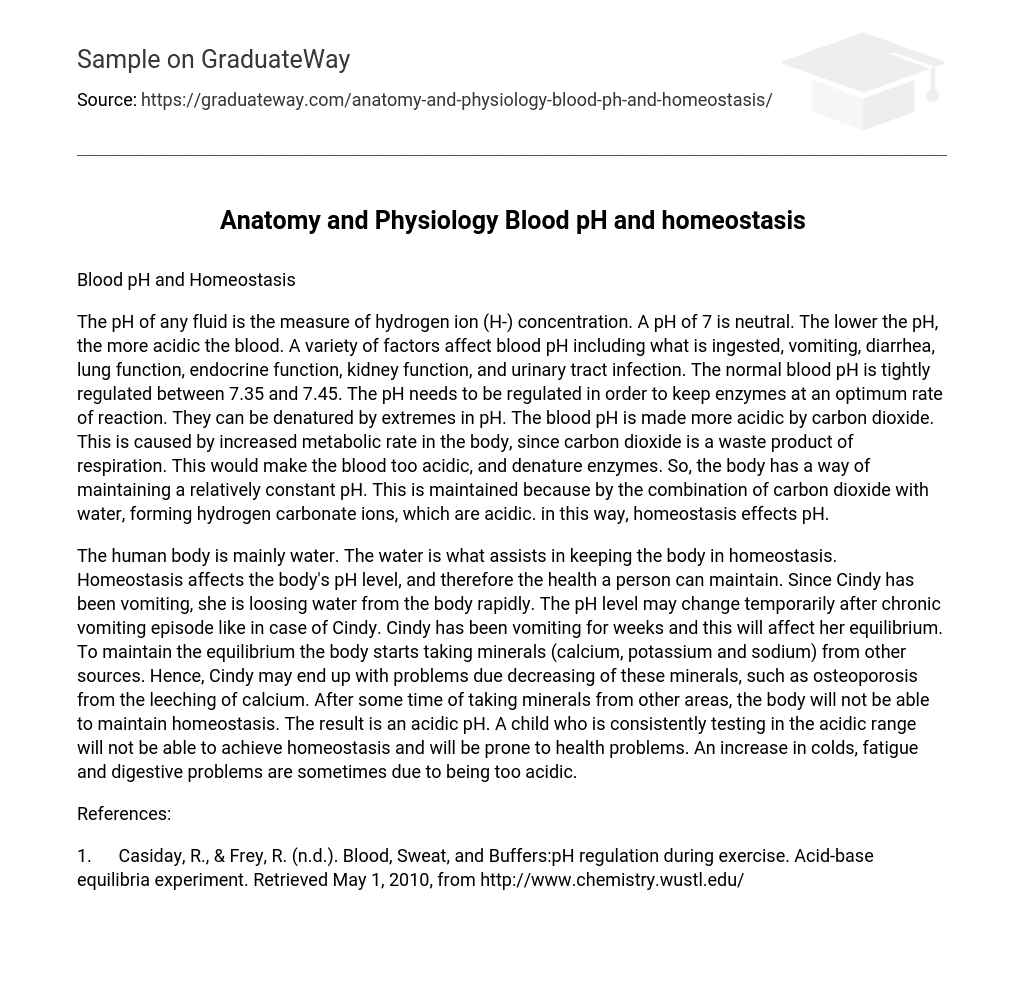Blood pH and Homeostasis
The pH of any fluid is the measure of hydrogen ion (H-) concentration. A pH of 7 is neutral. The lower the pH, the more acidic the blood. A variety of factors affect blood pH including what is ingested, vomiting, diarrhea, lung function, endocrine function, kidney function, and urinary tract infection. The normal blood pH is tightly regulated between 7.35 and 7.45. The pH needs to be regulated in order to keep enzymes at an optimum rate of reaction. They can be denatured by extremes in pH. The blood pH is made more acidic by carbon dioxide. This is caused by increased metabolic rate in the body, since carbon dioxide is a waste product of respiration. This would make the blood too acidic, and denature enzymes. So, the body has a way of maintaining a relatively constant pH. This is maintained because by the combination of carbon dioxide with water, forming hydrogen carbonate ions, which are acidic. in this way, homeostasis effects pH.
The human body is mainly water. The water is what assists in keeping the body in homeostasis. Homeostasis affects the body’s pH level, and therefore the health a person can maintain. Since Cindy has been vomiting, she is loosing water from the body rapidly. The pH level may change temporarily after chronic vomiting episode like in case of Cindy. Cindy has been vomiting for weeks and this will affect her equilibrium. To maintain the equilibrium the body starts taking minerals (calcium, potassium and sodium) from other sources. Hence, Cindy may end up with problems due decreasing of these minerals, such as osteoporosis from the leeching of calcium. After some time of taking minerals from other areas, the body will not be able to maintain homeostasis. The result is an acidic pH. A child who is consistently testing in the acidic range will not be able to achieve homeostasis and will be prone to health problems. An increase in colds, fatigue and digestive problems are sometimes due to being too acidic.
References:
1. Casiday, R., & Frey, R. (n.d.). Blood, Sweat, and Buffers:pH regulation during exercise. Acid-base equilibria experiment. Retrieved May 1, 2010, from http://www.chemistry.wustl.edu/





